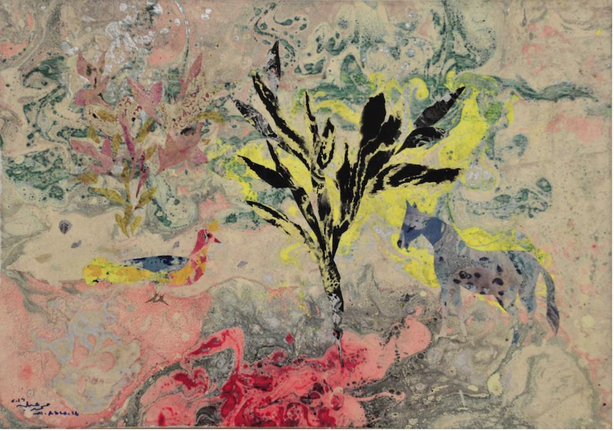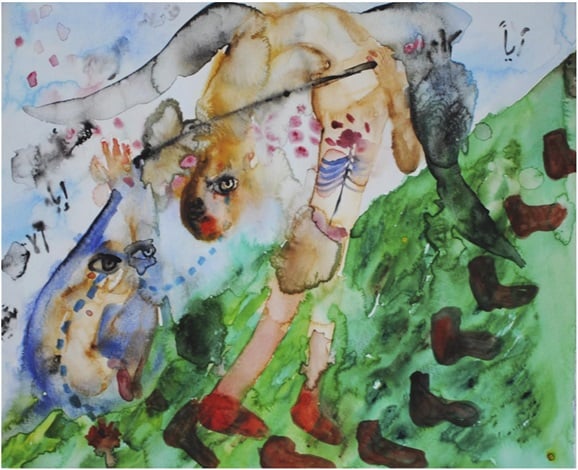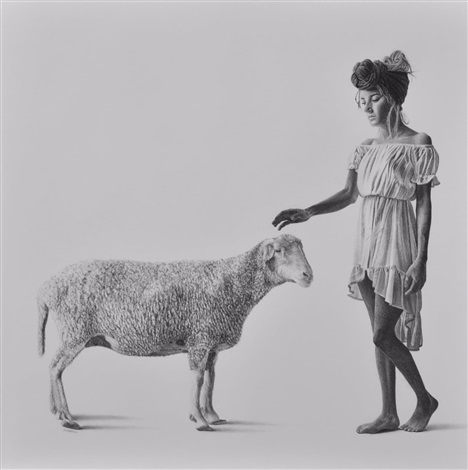8 Questions for Maliha Tabari, Founder of Dubai’s Tabari Artspace


Artnet Gallery Network

Maliha Tabari, the founder of Dubai gallery Tabari Artspace, takes matters into her own hands. After completing a BFA in the US, the energetic Tabari returned to Dubai with the ambition of founding a gallery with the global reach she felt Middle Eastern art deserved. In 2003 she founded Tabari Artspace.
In the past 18 years, the gallery has witnessed a seismic shift in the cultural scene in the region. “The Middle East has a rich history of migration and the mixing and sharing of cultural ideas which continues today. Indeed, many of our artists have existed in multiple countries and have navigated various communities,” Tabari said. “Naturally, this type of exposure causes artists to put forward new and complex perspectives.”
For Tabari, this rich history is what makes the region unique. Her family name is derived from Lake Tiberias, “a place with a wealth of history and symbolism,” she said. “Tabari embodies notions that are central to the identity of our gallery and which are explored and examined through the practices of our artists—borders, space, place, and identity.”
We chatted with the dealer about what movies and books she’s been influenced by, her fondest memories in 18 years running a gallery, and the unexpected career she’d choose if she weren’t a dealer.

Mohamed Abla, The Horse and The Bird (2016). Courtesy of Tabari Artspace.
How has the landscape for Middle Eastern art changed since you founded Tabari Artspace in 2003?
The status and shape of Middle Eastern art have altered and expanded in ways that would have been inconceivable at that time. My initial program of artists comprised the modern masters that I had forged friendships with while travelling across the region. I would visit the studios of Adam Henein, Omar El-Nagdi, Hussein Madi, and Mohamed Abla to immerse myself in what they were working on. It struck me then that their art was a snapshot into a particular moment and climate and that it was important to share this with a wider audience. There has since been a growing international and institutional appreciation for Middle Eastern art.
What are the lessons you’ve learned in 18 years running a gallery?
Be prepared to adapt. Over the last two decades, we’ve witnessed unprecedented changes—as a gallery, as a region, as a player in the art market, as a humanity. These shifts that span new technologies, mass migration, and the very language we use to discuss concepts like identity, feed our artists with new ideas, and urge us to constantly reconsider the way that we exhibit, communicate and remain relevant as an art gallery.
What is your biggest success story?
Contributing to the trajectory of Middle Eastern art as a woman, whether as a gallerist or collector is a driving force. I derive a deep sense of personal satisfaction through the nurturing of emerging artists and witnessing their practice appreciated by an increasingly diverse and educated audience.
My work gives me the chance to bridge different worlds. I support artists from this region through international acquisitions and exhibitions. It’s all rooted in passion. I never take it for granted. To survive and thrive as a gallery amidst turbulence is an accomplishment.
Do you have any special memories from your years as a dealer?
Some early studio visits really left an impression, especially my journeys to Beirut to meet Hussein Madi. Back then Madi’s market was mainly local Lebanese buyers, I would fly there to spend time with him and see what he was working on three times a year and collected his work which I adored.
He was the first artist that I began to work with on a regular basis and I came to represent and exhibit him. My memories of his studio are so vivid and hold much significance. He’s a father figure, who kindly produced a special work for me as a wedding gift. He’s truly a master sculptor and painter. I remember him painting in the studio and us sitting down together for sunset discussions on his terrace across from the university in Beirut. On one occasion time stood still as he purposefully plucked out pomegranate seeds while discussing the mechanics of the fruit with me in detail. It was his attention to detail, the way he observed the world, his appreciation for form and color that really struck me. He could capture the female form in a single brushstroke.
Those days in Beirut were so special to me and I’m proud to say our friendship remains strong decades later.

Alymamah Rashed, I Keep You Close To Me When I Don’t Want To (Ayan Kan Al Amr) (2020). Courtesy of Tabari Artspace.
What artist are you watching now?
Regionally, two artists that stand out are Alymamah Rashed from Kuwait and Maitha Abdalla from UAE. Working with women artists has always been a priority of ours, as a women-led team that seeks to put forward balanced perspectives and champion equality in the art world. Both artists are from the Gulf and made a powerful impression on me with their nuanced articulation of their realities, across mediums, synthesizing womanhood, adolescence, faith, philosophy, the global, and the local.
African art has also been on my radar for some time. Generally speaking historic trade routes, cross-cultural exchange and immense social and political struggles have left their trace across Asia and Africa in profound and complex ways. I find much like the artists I encounter in the MENA region there’s a political undercurrent in much of Africa’s art, a problem/solution approach rather than the production of art for art’s sake.
One of my professors said to me that “anything that includes the touch of your hand is a political gesture because you’re releasing a sense of yourself into the work”. And the trace of the human hand is one interesting factor that I often witness mutually in Middle Eastern and African art.

Samah Shihadeh, The Good Shepherd (2020). Courtesy of Tabari Art Space.
What on the horizon for 2021 and beyond?
We started out bringing our “Terra (Un) firma” exhibition of hyperrealists Samah Shihadi and Michael Halak to Dubai in February before launching Alymamah Rashed’s first solo exhibition during Dubai’s Art Month March. This June, we are excited to present our first physical exhibition at Cromwell Place in collaboration with Abu Dhabi Art, as the city reopens. For the group show that draws together several Middle Eastern galleries, we will put forward a selection of multi-disciplinary works by Maitha Abdalla. In September our Dubai gallery will exhibit Jordanian visual artist Khaldoun Hijazin whose paintings probe structures of power and ideologies through dark humor and densely layered narratives.
What books, articles, or movies have made an impression on you lately?
NFT is the topic of the moment so I’ve been immersing myself in all literature surrounding it. I’m really excited to see the ways that blockchain technology is rapidly shaping the art world. I also recently watched the Seaspiracy documentary which traces the impact of commercial fishing. I found it very jarring and it urged me to consider the relationship between what we eat and our environment more closely.
Right now I’m reading Ada Calhoun’s Why We Can’t Sleep: Women’s New Midlife Crisis which puts forward important perspectives about the contemporary woman’s experience, navigating familial, social, and professional obligations. I’d also recommend Reflections: Contemporary Art of the Middle East and North Africa by Venetia Porter, Charles Tripp, and Natasha Morris to anyone curious about the status and shape of Middle Eastern art today—a beautiful and illuminating publication!
If you weren’t a dealer what would you be doing?
Part of me loves the idea of having a small shack and grill on the beach—Millie’s Shack and Grill—serving up grilled cheese sandwiches and margaritas! Another part of me is drawn to mentorship, uplifting others especially women, has been central to what I do and gives me a real sense of purpose. However, friends have told me that in a past life I would have been a warrior woman, I’m very resilient!